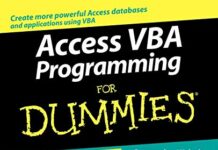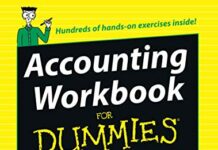
Ebook Info
- Published: 2008
- Number of pages: 368 pages
- Format: PDF
- File Size: 5.53 MB
- Authors: Deirdre Pitney
Description
Shaping up for a triathlon is serious business. Triathlon Training For Dummies is packed with insider tips and proven methods for training for a triathlon and pumping yourself into the best possible shape by race day. It helps you find the motivation you need to stick to your program, eat better to maximize your energy, and prevent injures both before and during the race. This authoritative guide helps you evaluate your cardiovascular fitness, muscle strength, endurance, and flexibility, and to set manageable realistic training goals. You’ll learn how to establish a workout schedule, choose a target finish time get the right, affordable equipment you’ll need for each leg of the race, and maximize your fitness and form for swimming, biking, and running. You’ll also get plenty of help in putting it all together as you focus your training, add dual workouts, become a quick-change artist, and save time during transitions. Discover how to:Choose an event to train for based on your fitness levelGet into your best possible shapeSelect the right equipment and sportswearTrain for an Olympic, Sprint, or Ironman triathlonFuel your body and prevent injuriesPrepare for training sessionsMaintain energy and recover quicklySet training schedules for every triathlon eventTreat common training and racing injuriesLive like an athleteTriathlon Training For Dummies comes complete with resources for finding triathlons near you, lists of items to bring along on race day, and tips on registration formalities and racing etiquette.
User’s Reviews
Editorial Reviews: From the Inside Flap Learn to:Train for a triathlon — no matter your fitness levelGet into your best possible shapeSelect the right equipment and sportswearFuel your body and prevent injuriesPowerful, proven methods to speed up your swimming, blast off on your bike, and run with the bestShaping up for a triathlon is serious business. This authoritative guide is packed with insider tips and hands-on advice for pumping yourself into the best possible shape by race day. It helps you find the motivation you need to tackle a sport that you’ve never done before, stick to your program, and eat better to maximize your energy. Evaluate your current fitness level — cardiovascular, muscle strength and endurance, and flexibilityTake it one sport at a time — maximize fitness and form for swimming, biking, and runningPut it all together — focus your training, add dual workouts, become a quick-change artist, and save time during transitionsLive like an athlete — prepare for training sessions, maintain energy, recover quickly, and avoid injuriesPlan for race day — taper your training, organize your gear, and stay focused and confident Open the book and find:Advice on choosing an event to train forWhat to look for when choosing swimming, biking, and running gearTips on staying safe and healthy while training and competingTraining schedules for every triathlon eventStrategies for handling your transitionsTreatments for common injuriesA checklist of items to bring on race dayResources for finding triathlons From the Back Cover Learn to:Train for a triathlon — no matter your fitness levelGet into your best possible shapeSelect the right equipment and sportswearFuel your body and prevent injuriesPowerful, proven methods to speed up your swimming, blast off on your bike, and run with the bestShaping up for a triathlon is serious business. This authoritative guide is packed with insider tips and hands-on advice for pumping yourself into the best possible shape by race day. It helps you find the motivation you need to tackle a sport that you’ve never done before, stick to your program, and eat better to maximize your energy. Evaluate your current fitness level — cardiovascular, muscle strength and endurance, and flexibilityTake it one sport at a time — maximize fitness and form for swimming, biking, and runningPut it all together — focus your training, add dual workouts, become a quick-change artist, and save time during transitionsLive like an athlete — prepare for training sessions, maintain energy, recover quickly, and avoid injuriesPlan for race day — taper your training, organize your gear, and stay focused and confident Open the book and find:Advice on choosing an event to train forWhat to look for when choosing swimming, biking, and running gearTips on staying safe and healthy while training and competingTraining schedules for every triathlon eventStrategies for handling your transitionsTreatments for common injuriesA checklist of items to bring on race dayResources for finding triathlons About the Author Deirdre Pitney is a freelance writer who writes articles on women’s issues, fitness, and wellness, and is actively training for a triathlon. Donna Dourney has completed a Half-Iron and full Ironman Triathlon and has served as a personal trainer for clients, tri clubs, and first-time athletes. Excerpt. © Reprinted by permission. All rights reserved. Triathlon Training For DummiesBy Deirdre Pitney Donna DourneyJohn Wiley & SonsCopyright © 2009 Deirdre Pitney and Donna DourneyAll right reserved.ISBN: 978-0-470-38387-2 Chapter OneTraining for a Multi-Sport Event In This Chapter * Getting ready to get moving * Defining what tri means for you * Knowing what to expect on race day Welcome to the sport of triathlon – a race that combines swimming, cycling, and running in one event. Although the growth of the sport may make it seem as if everyone around you is training for a triathlon, you’re actually joining a small minority – a group that the rest of the population might call either remarkably fit and dedicated, or just a little bit nuts. The degree of nuttiness they may attribute to you will be in direct correlation to the distance of your event – the longer the event, the crazier they may think you are. But while others are scratching their heads, you’ll be on your way to complete fitness – improved cardiovascular health and aerobic endurance, as well as powerful, toned muscles. But that’s not all. Training for a triathlon is a social event, too – triathlon training clubs are popular with experienced athletes as well as new ones. So what are you waiting for? This chapter launches you into life as a triathlete. Defining Your Triathlon You’ve decided to do a triathlon. But what exactly does that mean? Going from one sport to the next, and the next again, challenges all your muscle groups – and your mind. The distance of your event will determine just how great this challenge will be. And the goals you set for yourself will determine what you take away from the experience. Choosing a distance and event For most first-timers a triathlon is a Sprint-distance event – an 804.7m (0.5-mile) swim, a 19.3K to 25.8K (12- to 16-mile) bike ride, and a 5K (3.1-mile) run. A Super Sprint is slightly shorter than a Sprint, but it’s a less common event distance. After you have a triathlon under your belt, you may decide to take on a longer event – such as an Olympic, a Half-Iron, or the extremely challenging Ironman. Unless you’ve been drawn to do a triathlon by a specific fundraising race in your area, your first step will be to select an event in a location that’s accessible to you and in a time frame that gives you enough time to train. In Chapter 2, we offer tips on how to pick your first race. In Chapter 19, we offer a list of resources for finding local, national, and international races. TIP Choose a race that’s first-timer friendly, close to home, and easy to get to. Setting your triathlon goal The reasons for participating in a triathlon are as varied as the athletes you’ll see at the starting line – people of all sizes, shapes, and abilities. They’re all there to test their endurance and meet their personal fitness or life goals. Depending on your fitness level, your goal may be to finish your event in a certain time – or simply to finish. And for your first triathlon, that’s the best place to start. If you’re determined to be a little more specific about how and when, remember these goal-setting tips: Stay positive. “I will finish” will keep you far more motivated than “I won’t finish last.” Focus on what you want to do – finish happy and strong. Stay personal. If you want to focus on where you’ll place, make this goal about you, not the other triathletes. Set your goal about your own personal finish time or how you’ll feel when you finish, not about where you’ll finish in relation to everyone else. Your triathlon is about you. TIP If you’ve entered road races, swims, or cycling events in the past, you may be tempted to set a goal time for your event. If you want to set specific time-related goals, set these for your training sessions, not for your first event. So many factors can influence your race time – water currents, wind, course elevations, even the number of other triathletes competing in your event. You don’t want to be disappointed that you didn’t meet an arbitrary collection of hours, minutes, and seconds for an event you finished successfully in every other way. Evaluating Your Equipment Needs You have ambition. You have some degree of fitness. And you have enthusiasm. Still, you may be lacking a few essentials – wheels, clothing, or shoes. Following is a list of the basic equipment you need to complete a triathlon. Buy them now and start using them in your training. You’ll want to use for your event the same clothing and equipment you train in. Tri suit: Available in one or two pieces, tri suits fit snugly and feature quick-drying fabrics and padded shorts for the ride – you don’t want to have to change any clothing during your event. Tri suits look serious. Even the idea of wearing one can be intimidating. You may think that only the experienced or elite triathletes will be in tri suits, but the tri suit is a great choice, especially for beginners, because it simplifies your event and your transitions. An optional piece of equipment is a wetsuit. A wetsuit gives you warmth and buoyancy and helps you glide through the water. Water temperature and race rules will dictate whether you can wear a wetsuit. Goggles: Goggles protect your eyes from the chlorine or saltwater to help you see where you’re going during your swim. Find a pair that fits your face and doesn’t leak or fog. Buy a few pairs and pack them in your race bag – you won’t want to swim without these. Bike: The bike is the most expensive and most complicated piece of equipment you need. If you’re in the market for a new bike, visit your local bike shop and share your goals with a salesperson. If you have a bike in your garage or can borrow one from a friend, bring that to a bike shop to have it tuned and to be sure it fits you correctly. Helmet: A helmet is an absolute must-have. Don’t ride without one – ever. Other bike accessories: Consider cycling gloves, cycling shoes, clipless pedals, and sunglasses – for comfort and efficiency, and to increase your safety. Running shoes: Just as you have shoes for work and shoes for play, maybe shoes for one outfit and one outfit only, you need shoes just for running. Invest in a good pair of shoes designed just for running, not cross-training or tennis or basketball. You’ll appreciate the cushioning on your joints and reduce your risk of injuries. In Chapter 3, we provide a comprehensive list of all your equipment needs – including what to look for when you’re shopping and how much you can expect to spend. REMEMBER With all the equipment options, it’s easy to get overwhelmed and think you need the newest, shiniest, and most aerodynamic equipment you can find and afford. Not so. The most important factor in finding equipment is fit. You can spend a bundle on a high-end triathlon bike, but if it doesn’t fit your body, you may as well grab yourself a tricycle. Taking to Your Sport Whether you’re experienced in one or more of the sports or you’re a long-time athlete who’s practiced all three of them, putting them together requires practice and attention to form. Finding your form Even if you already enjoy each of the sports and are comfortable racing or training for a single-sport endurance event, when you train for a triathlon, you’ll save energy and improve performance by focusing on the fine points of efficient strokes, spins, and steps: Swimming: There are five basic steps to an efficient and powerful swim stroke: hand entry, catch, pull, push, and recovery. In Chapter 5, we provide details on proper form and body position in the water (complete with illustrations). Cycling: If you remember riding around your neighborhood as a child, you may be surprised to know that there’s a technical aspect to riding that can make your journey around the block easier and more fun. For more on cycling mechanics and form, turn to Chapter 6. Running: Most first-time triathletes are anxious about at least one of the sports. If swimming isn’t your fear, odds are, it’s running. For tips on staying on pace with your running, check out Chapter 7. Making time for transitions The links between the three sports in a triathlon are called transitions, and in a triathlon there are two – one from the swim to the bike (called T1) and another from the ride to the run (called T2). Transitions take place in a designated area where you’ll rack your bike and lay out everything you need for your event. Getting from your swim onto your bike can take anywhere from 5 minutes to 20, depending on how well prepared you are before your event and how much you practice going from one sport to the next. If you follow the training schedules in Chapter 10, you’ll put two sports together before your event, either going from a swim to a bike ride or a ride to a run. You don’t have to train in all three sports in one day, but you’ll definitely want to get your muscles used to going from one sport to the next in dual-sport workouts. On your two-sport training days, you can set up a transition area to practice placing your gear and getting it on and off quickly and easily. For transition tips, turn to Chapter 8. Training on a Schedule You can train for a triathlon and have a life. Training for any distance event is a commitment. We can’t promise it won’t consume your mind, but we can offer training guidelines so that your time in the water or on the road doesn’t chew up every available minute of your day. In Chapter 10, we offer detailed week-by-week training schedules for each of the event distances. But before you start following the schedules, be sure you can comfortably do the first week’s training for each sport. If not, spend some time building your endurance in the sport(s) in which you’re weakest. When you have a solid fitness base, you can train for a Sprint triathlon in as little as four hours a week over a 12-week period. That’s doable. As you increase your event distance, plan to increase the time you spend training – in some cases, double that time. For example, to prepare for an Olympic distance, you’ll want to allow for eight hours a week for 20 weeks. A Half-Iron will demand at least ten hours a week for 24 weeks. An Ironman – well, forget what we said about not consuming your life. You will eat, sleep, and breathe triathlon training for the better part of a year, or at least 30 weeks. Everything you do, you’ll think first, “How will this affect my training?” But by the time you get to the point where you’re ready to compete in an Ironman, you’ll be so hooked on triathlons that this will actually sound good to you! Fueling your body and mind We believe you can fit triathlon training into any lifestyle, but you do need to be prepared for it to take hold in areas you didn’t expect. To maintain your energy and your motivation, you’ll be making changes to your diet, your sleep habits, and your way of thinking – and if you’re following a plan and staying focused, these changes will all be overwhelmingly positive. After you begin training, you’ll find it easy to identify those days when you didn’t get enough sleep or eat a nutrition-packed meal. Even what you’re thinking can affect your workout that day. As you train, you’ll begin to focus on how your body works, not so much on how it looks. Eat a bagel and drink a cup of coffee for breakfast and then try to get through a tough swim or an 80-minute bike ride. You’ll notice how it affects your performance – and you’ll grab that protein- and carb-rich breakfast and an extra glass of water the next morning. (For specifics on how to fuel your body with good nutrition and hydration, check out Chapter 9.) TIP Try this exercise some day while you’re training: Tell yourself you’re tired, you can’t do this, you’ll never make it to the next telephone pole … and you won’t. If you focus on bad thoughts, stress, or anger, you’ll feel your form fail and your speed slow. Go out and keep your thoughts on your power, your strength, how good it feels to be moving, and you’ll keep moving. Yep, your mind is that good. Strengthening and stretching your limits Training with weights can help you to build stronger muscles, and the power from your pumped muscles can improve your overall triathlon performance and reduce your risk of injury. Don’t worry – you don’t need to spend hours in a gym. Performing two exercises, twice a week, for each of your major muscle groups – chest, back, biceps, triceps, core, hamstrings, and quadriceps – can yield dividends. Treat your working muscles right with some gentle stretches, too. Improving your flexibility will ease sore muscles, especially in your neck, back, and shoulders after a long bike ride. In Chapter 11, we give you a quick and easy strength-training and stretching program to enhance your triathlon training. Looking Forward to This Race, and the Next One, and the Next One … Thinking about how you’ll complete your triathlon right now, as you’re reading Chapter 1 of Triathlon Training For Dummies, may feel like you’re getting ahead of yourself. But visualizing how you’ll perform in your event will have two benefits: It will keep you motivated to get there. It will help you plan well for your event day. Beyond sticking to your training schedule and making sure your gear fits and functions properly, preparing for race day by packing well and arriving early can make a big difference in how smoothly your event goes. Knowing what to expect during your first race To prepare for your triathlon, be sure to review all the information available on your event’s Web site and read Chapter 14 of this book, where you discover what you need to do when you arrive at your event. TIP Most important of all: Arrive early. Give yourself at least two hours before your event starts to: Park your car. Unload your equipment. Stage your transition area. Find out how to get to the water and back to the transition area, how to get in and out of the transition area, and in what direction you need to go when you’re on your bike and starting your run. Get your wetsuit on, if you’re wearing one. Stretch and focus. Thinking about what you’ll do next Yes, we really said it: What’s next? If you’ve accepted the triathlon challenge, be prepared for the possibility that you’ll be hooked. And if you are, it’s easy to think bigger, better, faster. TIP Slow down. Remember to give yourself time to enjoy your accomplishment and accurately assess your performance. Chapter 15 is filled with great blah-busters to help you overcome any post-race burnout and helpful tips to get you headed in the right direction for your next event. A brief history of triathlons Triathlon is a relatively new sport – the first one took place in San Diego, California, in 1974. Four years later, the first Ironman triathletes crossed the finish line in Hawaii with a time of 11 hours, 46 minutes, and 58 seconds. Since then, triathletes have cut that time to the 1996 record-setting 8 hours, 4 minutes, and 8 seconds. Triathlon became an Olympic event in 2000, at the standard Olympic race distance of a 1500m swim, 40K bike ride, and 10K run. Once reserved for elite athletes, the growth and popularity of the three-sport event has made it accessible and as easy to find as local road-running races. (Continues…) Excerpted from Triathlon Training For Dummiesby Deirdre Pitney Donna Dourney Copyright © 2009 by Deirdre Pitney and Donna Dourney. Excerpted by permission. All rights reserved. No part of this excerpt may be reproduced or reprinted without permission in writing from the publisher.Excerpts are provided by Dial-A-Book Inc. solely for the personal use of visitors to this web site. Read more
Reviews from Amazon users which were colected at the time this book was published on the website:
⭐The book is written in an easy to read format.I have competed in several triathlons from Sprint to Half-Ironman. This year I’m doing my first Ironman so I decided to get as much info as posible. Triathlon for Dummies would try to touch every aspect of the Sport ,but lacks a bit in a few aspects. In the Swim lots of training tips, but lacks a bit in the race like drafting someone in the swim which can serve you of two things he can be the eyes for you and he can save you energy. In the bike some things like the tube seat angle which can be replace for another tube to make it energy effecient like it Triathlon bikes. How can a few extras heart beats can affect the running part.But in overall the book is a great book. The reason why is because I have another book of Thriatlon Training and what the other lacks this one has. For someone who doesn’t have a coach and have an idea about the sport this book would defenelly would get your feet wet.
⭐This book was an excellent preparation for my first triathlon. It gave me all the information needed on the various gear and training required. I owe a large part of my success in my first tri to this book and I highly recommend it! If you are wondering about this fun and challenging sport, get this book and give it a try!
⭐I found this book to be pretty helpful in explaining the basics of a Triathlon to the uniniated. I didn’t understand how the transitions worked and never heard of tri suits until I read this book. It’s written in that positive easy to read Dummies style. If you’re thinking of doing your first Tri, I highly recommend it.
⭐I used this to train for a Sprint triathlon a few years ago. It is so dead-on for all that’s needed. They had a lot of helpful hints for what to bring, what to waer and how to set-up for the race.
⭐Very basic as to be expected with this series. It gives some good information and simple training plans for the beginner.
⭐Great insights and tips, it covers diet, workouts, and what to expect going into Tri’s. This is a great place to start when taking the first step into Triathlons.
⭐This was a gift for a friend that was training!!!! Great book!!! My husband also has a copy!!!
⭐great and helpful book
⭐I bought this in anticipation of my 1st triathlon next year. it is a really good read, giving loads ot hints and tips as well as training and practical information. it is an American version and so some of the distances aren’t quite the same as in GB and also road positioning guidelines have to be swapped from left to right as they assume left hand drive vehicles on the right side of the road. The websites and organisations are also state-side. I would have bought the British version had I known but it’s still a great book and gave me not only the basic knowledge I needed but also the enthusiasm.
⭐I already new a bit about triathlon training but this certainly helped to cover ground which I was not sure about also didn’t have to readfrom start to finish could pick out areas which I wanted to know about first
⭐A basic – but generally OK introduction to the sport of Triathlon. You need to be aware that the book is written for Americans in mind and is therefore written in yards and miles. Its very much a beginners guide (in my opinion). However, as you progress you will be looking to develop anyway and there is plenty more literature to invest in for that.However, if you can get a relatively inexpensive/ cheap copy its worth picking up if you are looking to get into this sport.
⭐Brilliant book may Bible for Tri athlete beginners like me. Includes all you need to know and more and also includes training plans from sprint Tri to ironman.
⭐If you’re a novice or neophyte to the sport of triathlon then I would wholeheartedly recommend this book.
Keywords
Free Download Triathlon Training For Dummies in PDF format
Triathlon Training For Dummies PDF Free Download
Download Triathlon Training For Dummies 2008 PDF Free
Triathlon Training For Dummies 2008 PDF Free Download
Download Triathlon Training For Dummies PDF
Free Download Ebook Triathlon Training For Dummies





